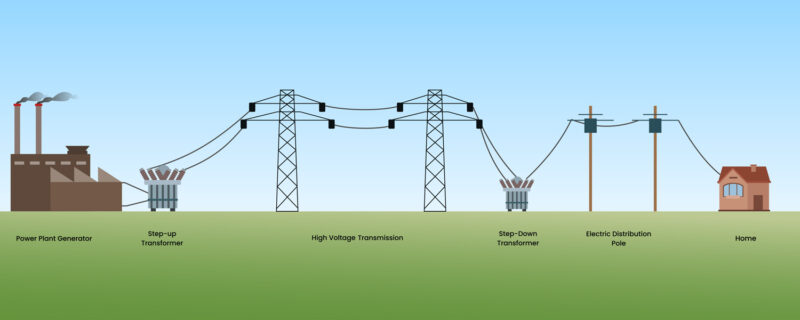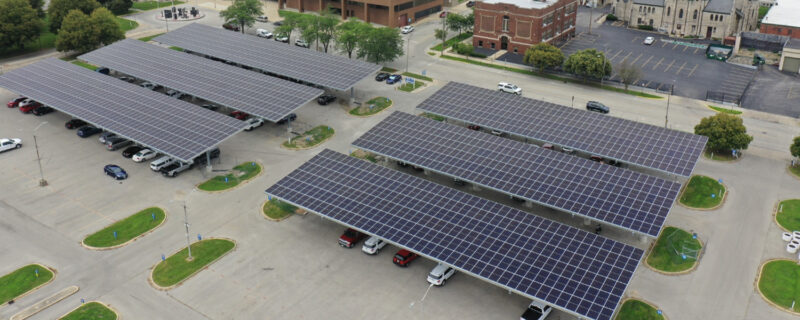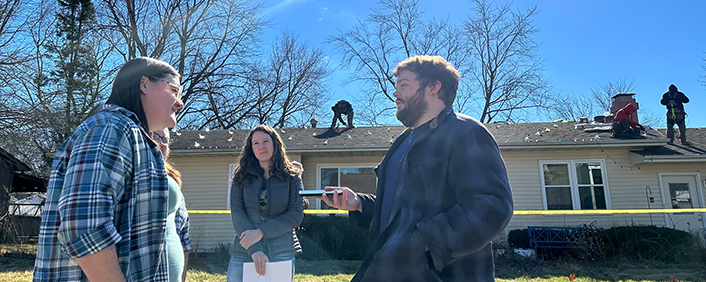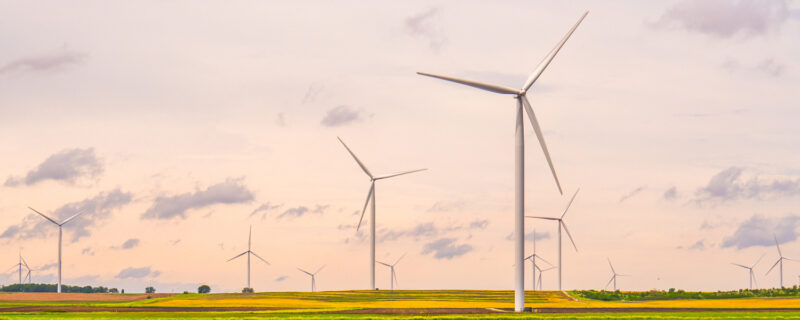
Electricity powers nearly every aspect of our daily lives—from lighting and technology to heating and cooling—yet few of us consider the complex systems and infrastructure that make this possible. But that’s changing: with the emerging demands of data centers/AI and impacts from extreme weather events, electric grid resilience has been all over the news. A recent report released by the Union of Concerned Scientists (UCS), “Keeping Everyone’s Lights On,” outlines the threats facing our grid as well as paths towards a more resilient future.
To help us better understand what lies ahead, we invited some UCS grid experts to our Resilient Communities Webinar Series to talk specifics about the challenges we’re all facing and how you can help move our grid forward. The first webinar, Grid Resilience 101, focused on grid basics: what our grid looks like today, and what we want for the future. The second webinar, Building a Resilient Illinois, dug into what is needed to move toward a more resilient future.
Electric Grid 101
To fully understand the need for grid resilience, we need to peel back the complex layers of our system.

Electric grids are made up of three sectors: generation, transmission, and distribution.
- Generation refers to how electricity is produced. This sector historically consisted of coal, gas, and nuclear power plants that were often owned by private corporations. Today, solar fields and wind farms also contribute to generation. In Illinois, unlike most other states, energy generation may not be owned by the companies distributing the electricity (owning both power plants and wires is not permitted). This increases competition among generators and brings prices down, but creates some challenges to planning a responsible transition to clean energy.
- Transmission refers to the long distance movement of high-voltage electricity. For example, the large electric lines you see crossing the landscape over long distances on a road trip make up the transmission sector. Transmission lines are largely owned by Commonwealth Edison (ComEd) in northern Illinois, and Ameren Illinois (Ameren) in the central and southern parts of the state. These lines often cross state lines, requiring regional oversight and planning, which is done by two regional transmission organizations in Illinois: Midcontinent Independent System Operator (MISO) for Ameren, and PJM for ComEd. These organizations are responsible for ensuring power flows reliably and affordably by facilitating the movement of wholesale electricity.
- Distribution refers to the delivery of low-voltage electricity from substations to homes. Substations take the high-voltage electricity that flows easily over long distances and reduce the voltage so it can be safely delivered to end users through smaller electric lines. The distribution infrastructure in Illinois is also primarily owned by ComEd and Ameren. Rural residents often receive their power from electric cooperatives, and some towns get power from their municipal electric utilities. The Illinois Commerce Commission regulates investor-owned utilities like ComEd and Ameren, while electric cooperatives and municipal utilities are controlled by their board of directors.
Planning For a Resilient Grid Powered by Clean Energy

Illinois’ residents, no matter their electricity provider, want reliable and affordable power. We also all want clean air and water, which require clean power to reduce pollution. And while everyone deserves an equitable and resilient electric grid to power their best lives, we have to invest today for the grid we want (and will need) in 2050.
To do this, we must continue investing in:
- Energy efficiency to decrease the amount of energy we need to produce while saving residents money on their bills.
- Renewable energy to produce cheaper, cleaner power.
- Battery storage to ensure a reliable and consistent energy supply by allowing us to capture excess energy when it’s available and use it when renewable sources are not producing electricity.
- Transmission line upgrades and additions to help reduce losses and accommodate new renewables in remote areas that need them the most.
- Virtual power plants to reduce episodes of peak demand, saving all customers money.
- Grid planning using climate assessments to analyze demand growth expected due to electrification, emerging technologies, and the transition to clean energy.
In addition to these investments, we must ensure that data centers are developed with equity in mind to prevent host communities from being burdened by water and energy issues. Investing in our future today will result in lower power bills, reduced power outages, shorter impact periods when outages do occur, and a grid that can withstand our growing needs for tomorrow.
Planning for Resilient Grids and Communities in the Face of Climate Change

Impacts from power outages are time-sensitive; consequences can escalate from loss of light to unsafe indoor temperatures in a matter of hours. Socially vulnerable communities often face longer and more frequent outages, further exacerbating energy inequities. These same communities are also frequently targeted for data center development due to low property values, which further increases local environmental burdens and strains outdated infrastructure.
Addressing these issues requires holistic programs that not only expand our grid’s capacity but also the capacity of our most vulnerable communities by ensuring:
- Planners are using the most up-to-date science in technology to inform cost-benefit analysis.
- Planners are including community leaders, specifically from vulnerable communities, in advisory boards with explicit decision-making power.
- Local priorities are guiding development.
- Programs allocate funding for technical assistance within communities most impacted.
By welcoming the most vulnerable to the table, we can actively work toward remedying past injustices while preventing future disparities.
Illinois’ Path to a Resilient and Renewable Grid

If we want future generations to have a reliable grid that can not only support technology but withstand climate disasters, we must demand better from our leaders today. For the sake of our power bills, our grid, and our climate, Illinois must pass the Clean and Reliable Grid Affordability (CRGA) Act. This legislation works to address all issues discussed in our two-part webinar series, and sets the stage for future planning.
Among a comprehensive suite of reforms, the CRGA Act would:
- Reduce expensive peak demand and expand grid capacity
- Save customers money with energy and gas efficiency
- Improve state energy planning and modeling
- Support the buildout of transmission infrastructure
In short, the CRGA Act helps provide the policy support needed to keep clean energy investments growing in Illinois ensuring a reliable, affordable, clean, equitable, and resilient electric grid for our future.







